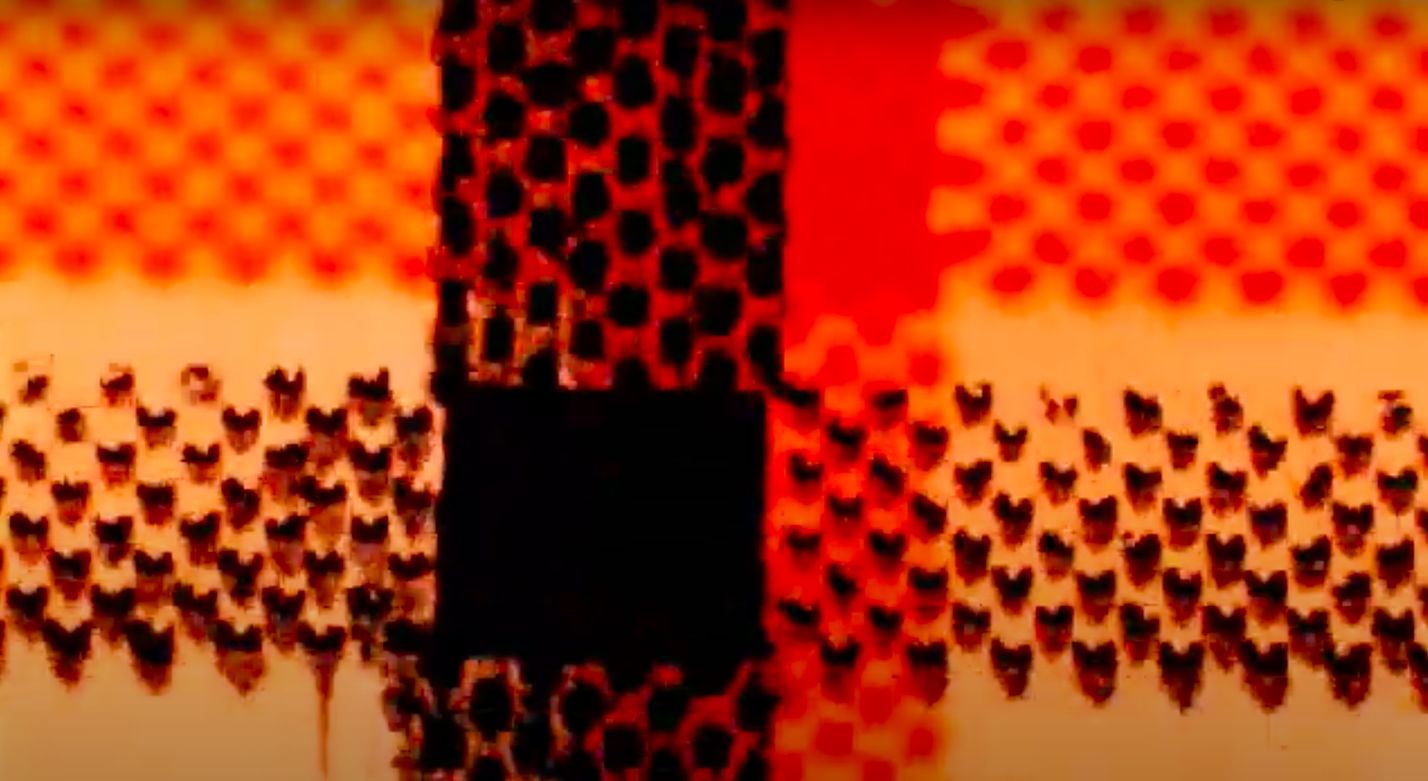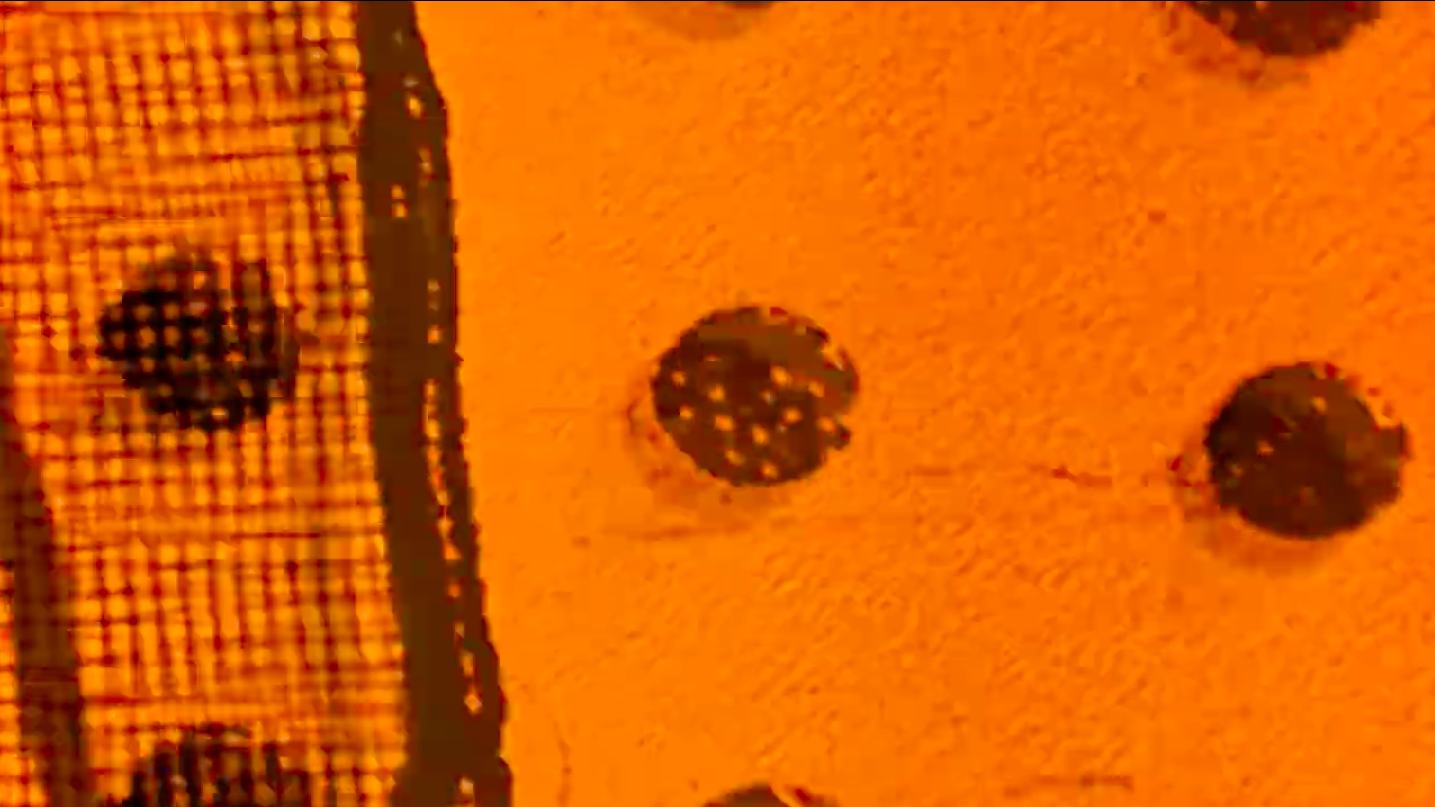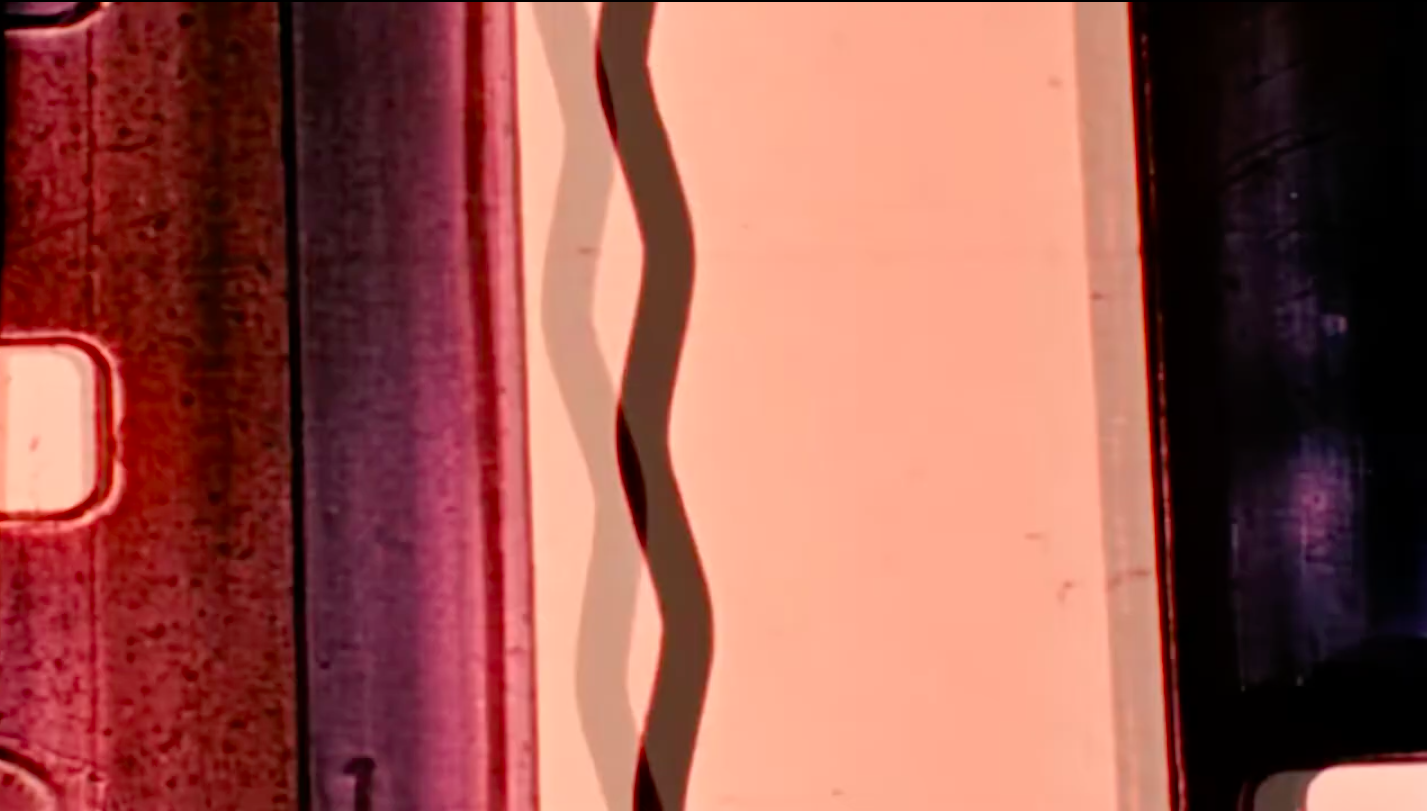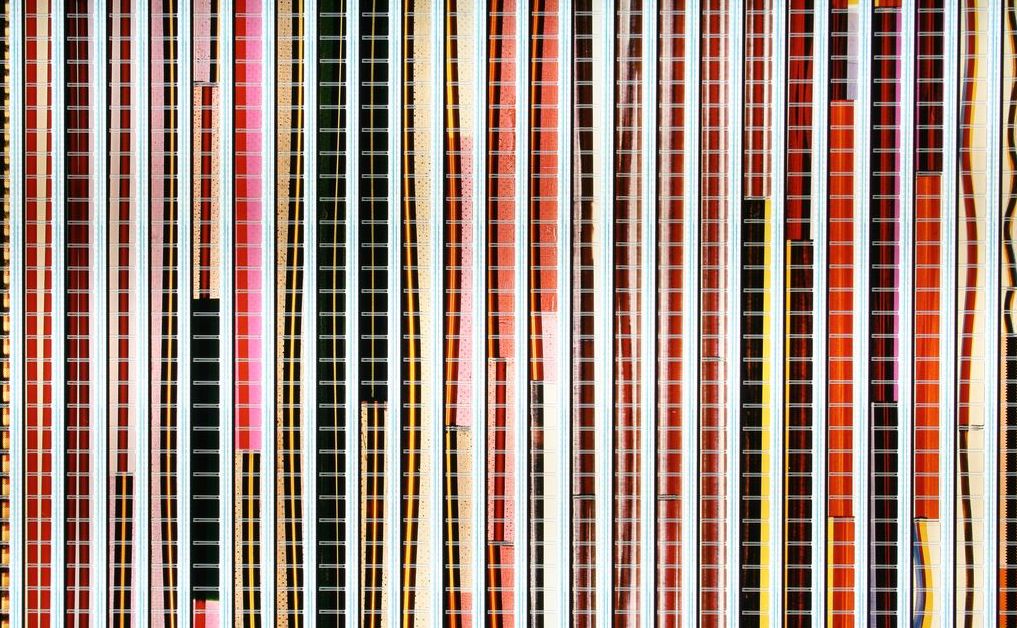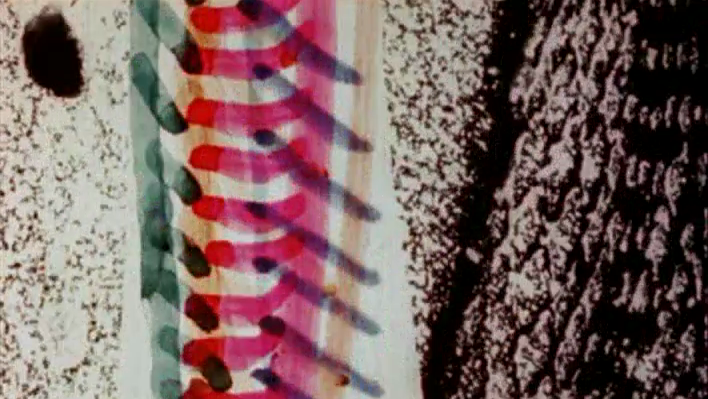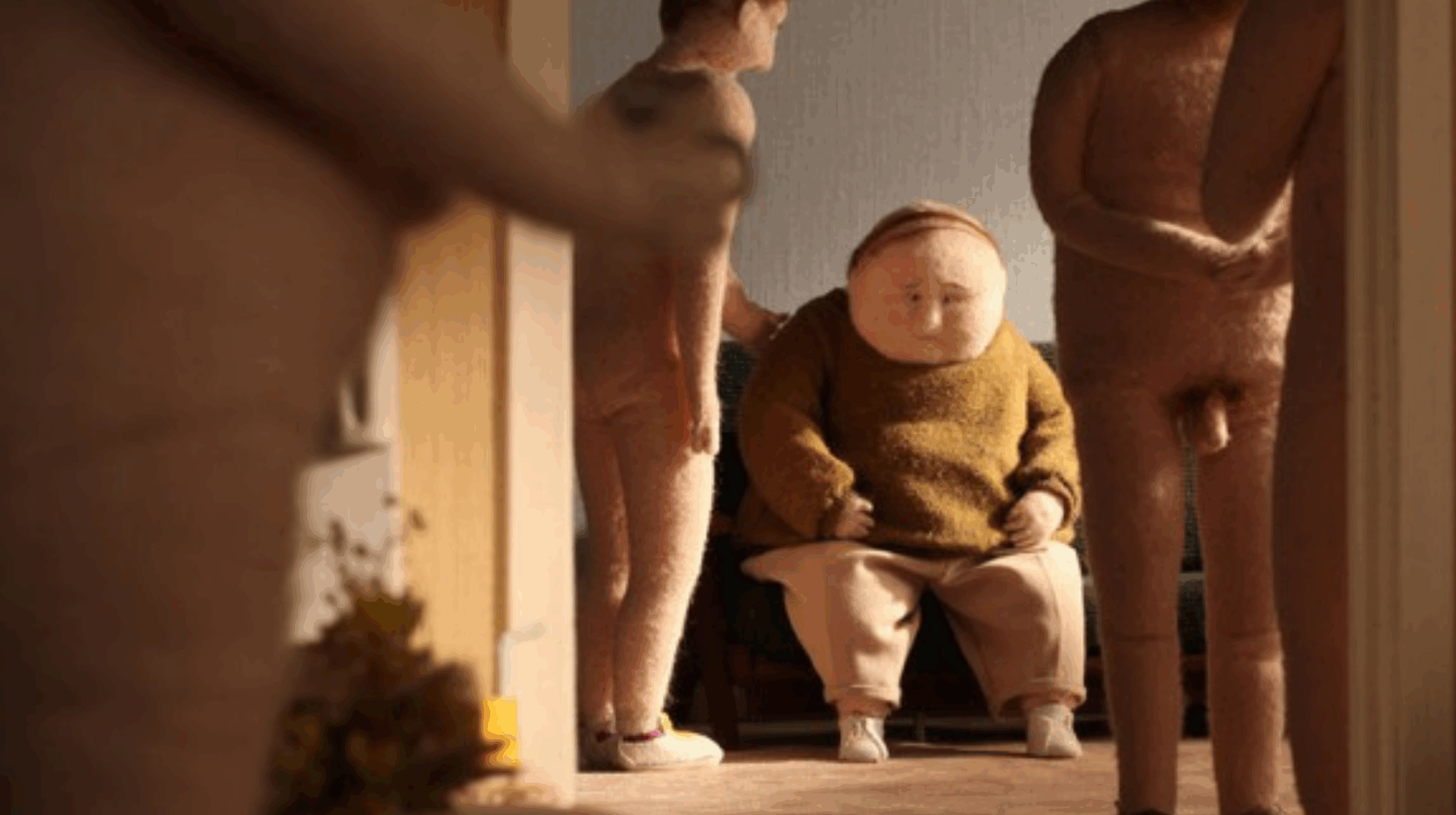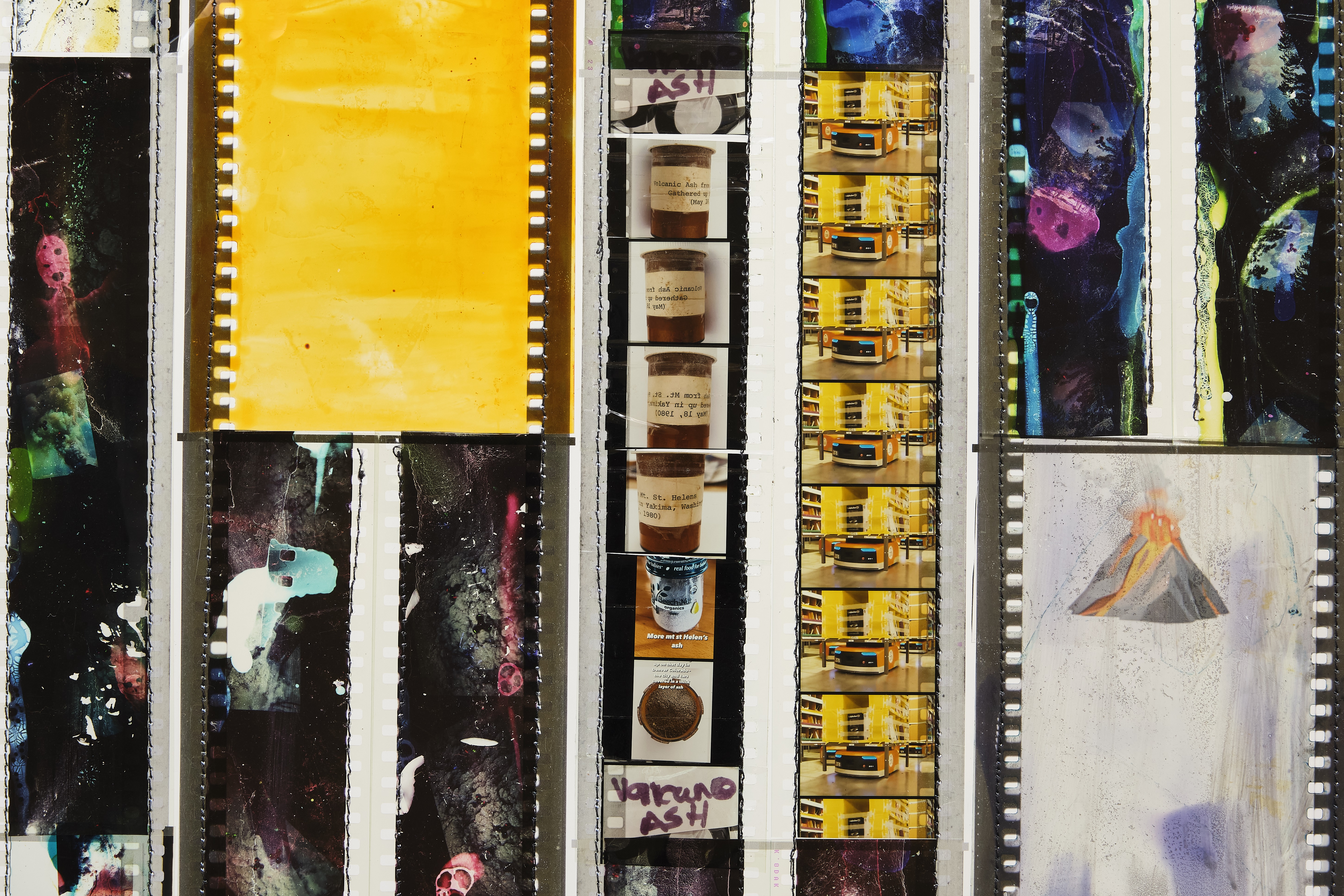Notes on the film
Employing cameraless (or direct) animation, Color Cry treats analogue film strips like celluloid ribbons for dyeing, stencilling, and layering images. For this film, Len Lye embraced the textile substrate of celluloid by directly impressing gauze, mesh, beads and fabrics with a broad weave onto 16mm filmstrips, before exposing these layered ribbons to light. This adaptation of a photogram technique, which he called “shadow-casting,” produced sequences that amplified the materials’ warp and weft.
After experimenting with different materials and effects, Len Lye paired his favourite sequences with a wailing blues harmonica track by Sonny Terry. Animated on screen, the textiles hum and buzz with tensile and frenetic energy. Cotton threads intertwine with errant fibres trapped in gelatin emulsion, and perforated edges of a celluloid ribbon zigzag along the edge like the ladder stitch of a sewing machine. For Lye, the film’s pulsating polka dots and twisting ribbons embodied the fleshy tissue of muscle sinews and blood vessels.
optical patterns of warp and weft
The optical rhythms of warp and weft complement the sonic vibration of Terry’s vocals and harmonica. When the song’s pulse begins to speed up, the rhythm of editing speeds up into a dizzying pace. This is paired with increased flashes of celluloid sprocket holes highlighting the physical movement of the film. In this way, Lye utilises the sight of a film escaping its projector to echo the sense of music’s urgency and anguish.
selection of filmstrips from Color Cry. Installation view from Old Brain, New Media (Govett- Brewster Art Gallery, 2006)
Understanding Cameraless Animation
Exhibition catalogue (in English and French) for an exhibition devoted to cameraless film, Zelluloid.
Zelluloid: Cameraless FilmLen Lye’s Direct Animation
Historian Roger Horrocks briefly introduces Lye’s direct animation in this article.
“Dance of the Hand”McLaren on Cameraless Animation
Animator Norman McLaren’s early primer on cameraless animation
“Cameraless Animation” by Norman McLaren